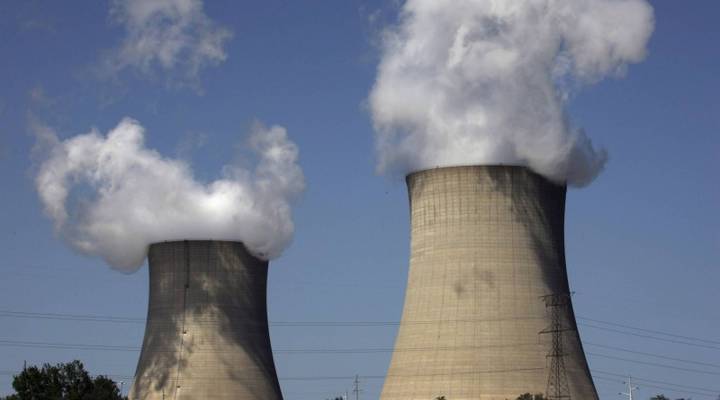
Could nuclear power play a major role in reversing climate change?
Could nuclear power play a major role in reversing climate change?

Amid devastating climate change and carbon emissions, governments around the world have been exploring alternative sources of energy to meet growing demand. While nuclear energy could play an important role as a low-carbon energy source, a lack of supportive policies and high cost of implementation have kept that from happening, according to a study by the MIT Energy Initiative.
The study, released in September, found that if nuclear power is incorporated into the mix of energy sources on a global scale, not only could the world’s increasing demand for energy be met, but climate change could be addressed in a significant way. Professor Jacopo Buongiorno, who co-chaired the study and heads the Massachusetts Institute of Technology’s Department of Nuclear Science and Engineering, spoke to host Sabri Ben-Achour about it. Below are edited excerpts from their conversation.
Nuclear energy has a politicized history, riddled with tragedy. Chernobyl, Three Mile Island and Fukushima are reminders of the risks of nuclear power. Why should we still consider it?
Existing nuclear fleets in the U.S. have been “continuously improving, and their safety records are outstanding,” Buongiorno said. The main value that nuclear power provides “is its potential to decarbonize the power sector” on a global scale, which Buongiorno said is possible based on his team’s analysis of other countries’ nuclear power use. The real barrier to implementing nuclear energy has been cost, he said.
What does the study find about current costs and how to reduce them?
The construction process is the most expensive part of building a nuclear power plant, Buongiorno said.
“We found that a series of innovations in the actual construction process might help reduce the cost of these plants,” he said. The study recommends the following steps:
1. Build standardized plants. This way, the process becomes more efficient, and the workforce “has very strong learning gains,” Buongiorno said. Tailor-made, site-specific plants are far more expensive and time consuming to build.
2. Use advanced concrete technology. This means implementing innovations like self-consolidating concrete instead of having construction workers pouring concrete manually.
3. Use modular construction. Because productivity on construction sites is low in the United States, Buongiorno said, “we think you can build larger modules in factories and ship those modules to the site” where they can simply be connected.
What about nuclear waste?
“The first thing to realize is that the amount of material we’re talking about is pretty low considering the amount of energy generated by these plants,” Buongiorno said. In other countries like Sweden, finding repositories for waste has been successful and safe in the past, he said. The bottom line, Buongiorno said, is that we have the technology to handle nuclear waste safely, and it’s more “a matter of implementing [nuclear power] in a politically durable” way.
There’s a lot happening in the world. Through it all, Marketplace is here for you.
You rely on Marketplace to break down the world’s events and tell you how it affects you in a fact-based, approachable way. We rely on your financial support to keep making that possible.
Your donation today powers the independent journalism that you rely on. For just $5/month, you can help sustain Marketplace so we can keep reporting on the things that matter to you.


















